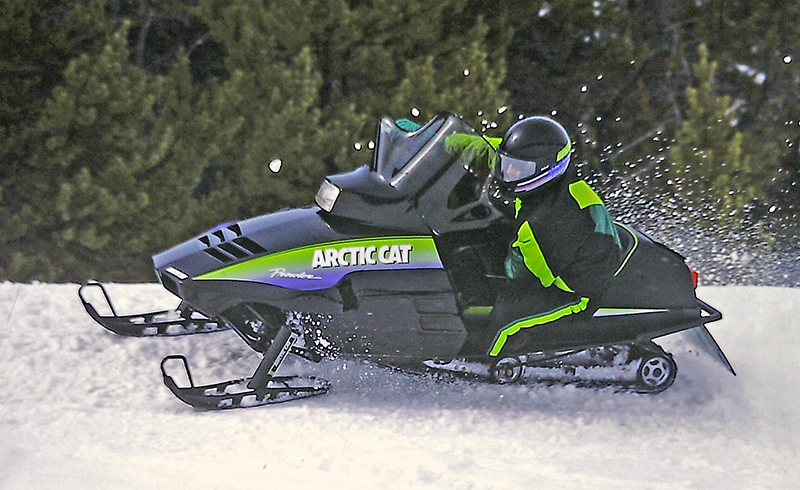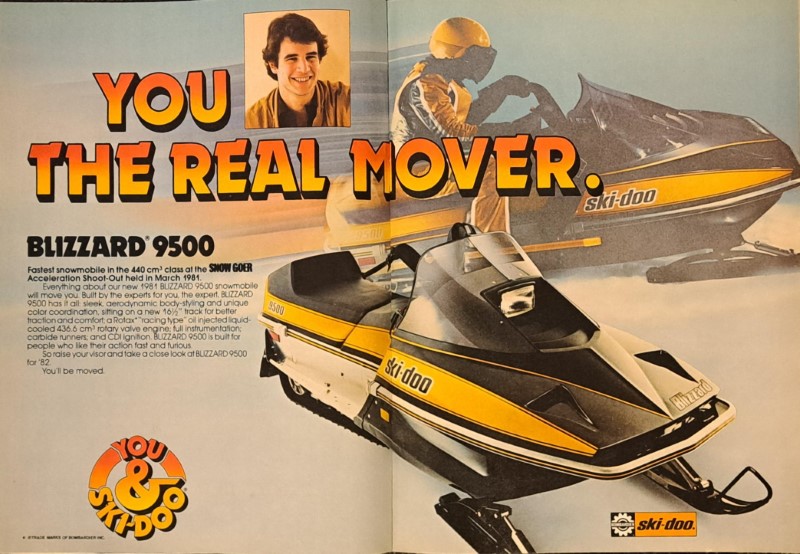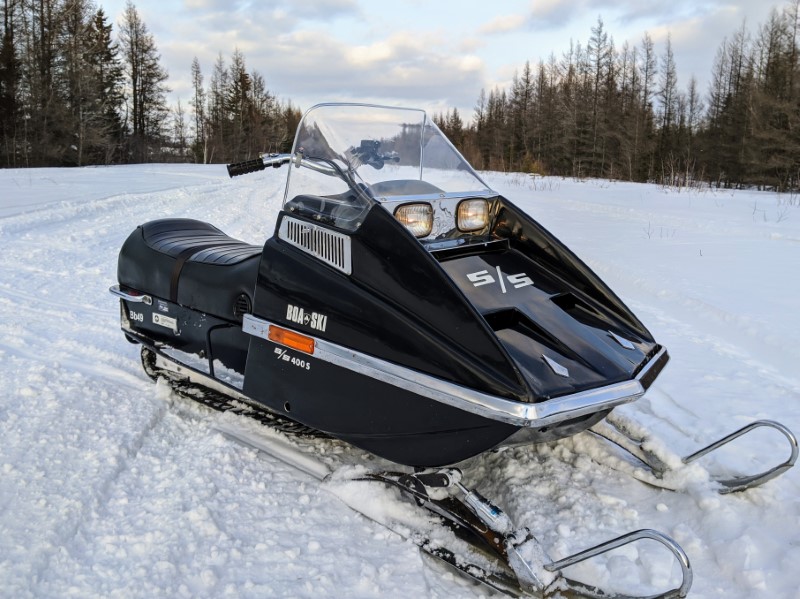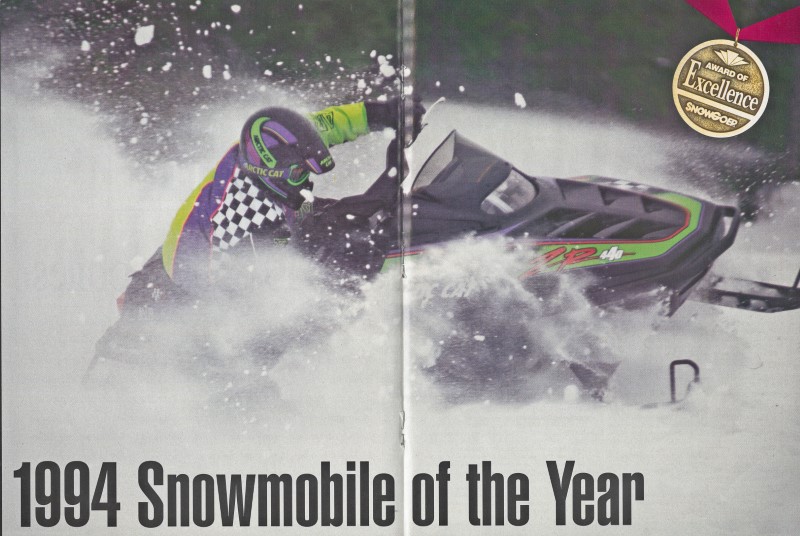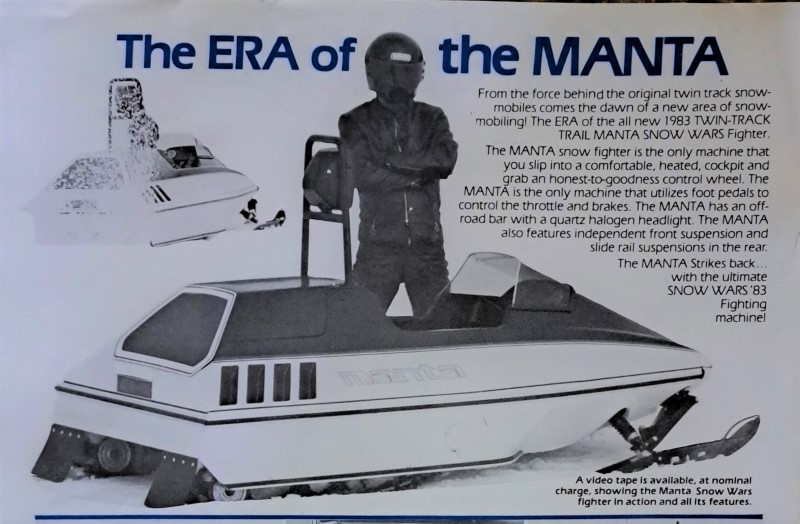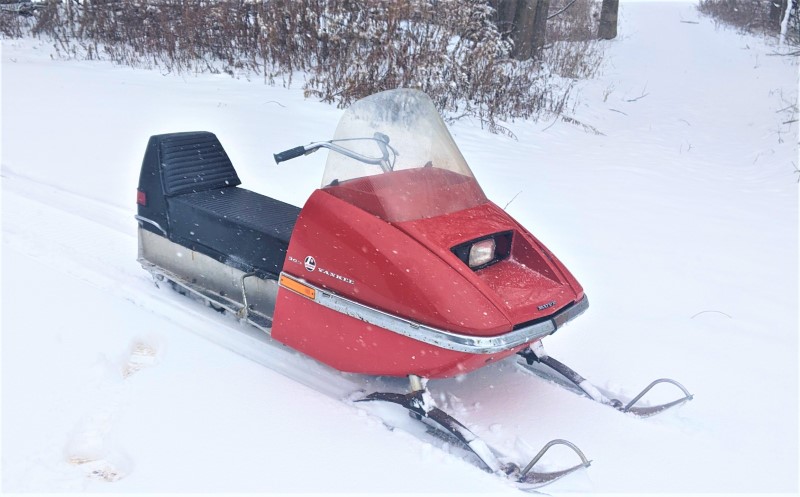
Introduced in 1976, John Deere’s generally excellent second-generation snowmobiles were widely seen to have one significant flaw. They were physically large and they weighed a lot.
Tired of hearing about big, heavy snow sleds, Deere pared pounds everywhere possible on its next chassis to create the smaller, lower and lighter snow machine that the market seemed to be calling for. Introduced for the 1979 snowmobile season, the all-new Trailfire replaced the Cyclone as the mainstream 2-Up family sled in the lineup. It was presented as “The New Breed of Deere,” a fitting description for a machine that was essentially all-new from the ground up.
The Deere On A Diet
The Trailfire was less snowmobile than the preceding Cyclone in just about every respect. Two inches shorter, an inch lower to the top of the windshield, two inches narrower and with a ski stance two inches narrower, the 440 Trailfire’s dry weight was 35 pounds less than the 440 Cyclone. Even the track was half-an-inch narrower and the speedometer was optional to save a few more pounds.
The Cyclone’s Kioritz reed-valve engine was replaced by a piston-port Kawasaki that was mounted lower and farther back in the Trailfire’s belly to drop the center of gravity and reduce weight on the skis. Even the gas tank capacity was reduced by a half-gallon.
Maybe the most interesting aspect of the Deere on a diet was the choice of tunnel material. The Cyclone had an aluminum tunnel and belly pan, but the first Trailfire used high strength low alloy (HSLA) steel instead, with thermoplastic rubber (TPR) on the sides of the belly pan for low temperature flexibility. Deere promoted the strength of the steel tunnel on the ’79 Trailfire but it only lasted one season. The company returned to aluminum tunnels for 1980 and subsequent model years.
Inside the tunnel was a new track suspension with considerably more travel than the one in the Cyclone.
Other improvements on the Trailfire included thicker seat foam and new easy-adjust handlebars. The new Firecharger exhaust system was shorter, lighter and stronger than the Cyclone’s equipment. The new design disc brake featured a larger puck for increased stopping power and longer wear, and it was easier to service.
A totally new color scheme and an improved warranty topped off the new low-profile light weight. John Deere Green gave way to “Winterfrost silver” as the primary hue, with vivid multi-color accent stripes running the length of the sled. A two-year Trail Hazard Track Replacement Policy was instituted as additional buyer protection above and beyond the normal one-year general warranty.
Running Through The Snow
The Trailfire looked like a winner in the sales brochures and the showrooms, but it was somewhat of a disappointment on the snow. It came up short on ride quality and handling compared to competitive machines, and even compared to the preceding Cyclone. This isn’t just my opinion, either, as others in the industry reached the same conclusions independently.
However, the Trailfire did have one major advantage over everything else on the trail. It simply sipped fuel compared to virtually all other sleds of the day, giving it superior range and economy of operation. Some riders reported getting over 20 mpg in everyday trail riding. My buddy “Lefty” never quite got that with his Trailfire 440, but he was consistently in the high teens on our club rides when most of the rest of us were happy just to stay in double digits. We’d stop and fill up a couple of times a day, but he could get by on one fill, or sometimes none.
Besides being ideal for people on a tight operating budget, the John Deere Finance Plan made the Trailfire and its stablemates attractive to purchase, too. Purchases prior to November 30, 1978, could qualify for no payments and no finance charges until March 1, 1979. That paved the way for low-cost promotional financing from other manufacturers in later years.
For 1980, Deere added the Sportfire, a single-passenger version of the Trailfire with a claimed “15 percent more power” and a little higher level of standard equipment, and re-launched the liquid-cooled Liquifire model in the same chassis. John Deere snowmobiles were showcased internationally as the official snowmobile of the 1980 Winter Olympics in Lake Placid, New York, but it’s questionable if this really did anything to help sales.
Time was running out on John Deere snowmobiles. Deere shipped a very respectable 21,626 units in 1979, but shipments steadily declined thereafter to less than 11,000 for 1982. Deere and Company sold its snowmobile business to Polaris, which quickly discovered that there was essentially zero dealer demand for Deere sleds and pulled the plug on them for good. That made the Trailfire the last John Deere 2-Up sled, and a particularly economical one at that.

